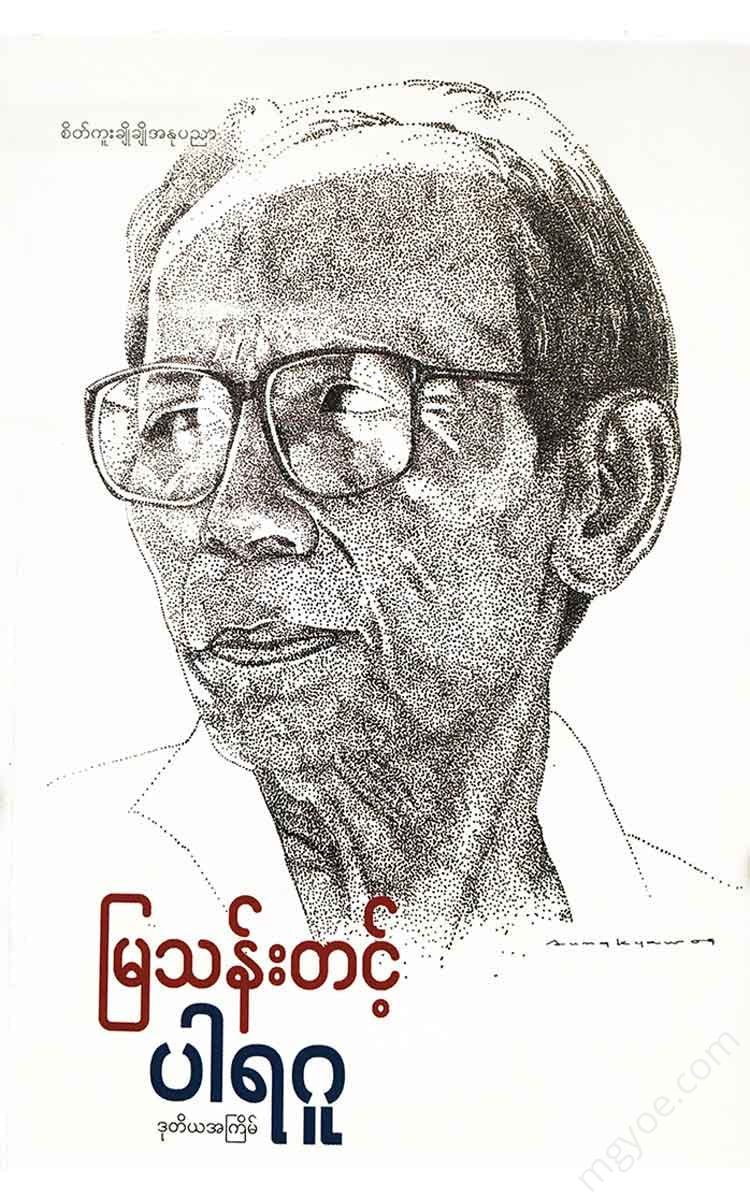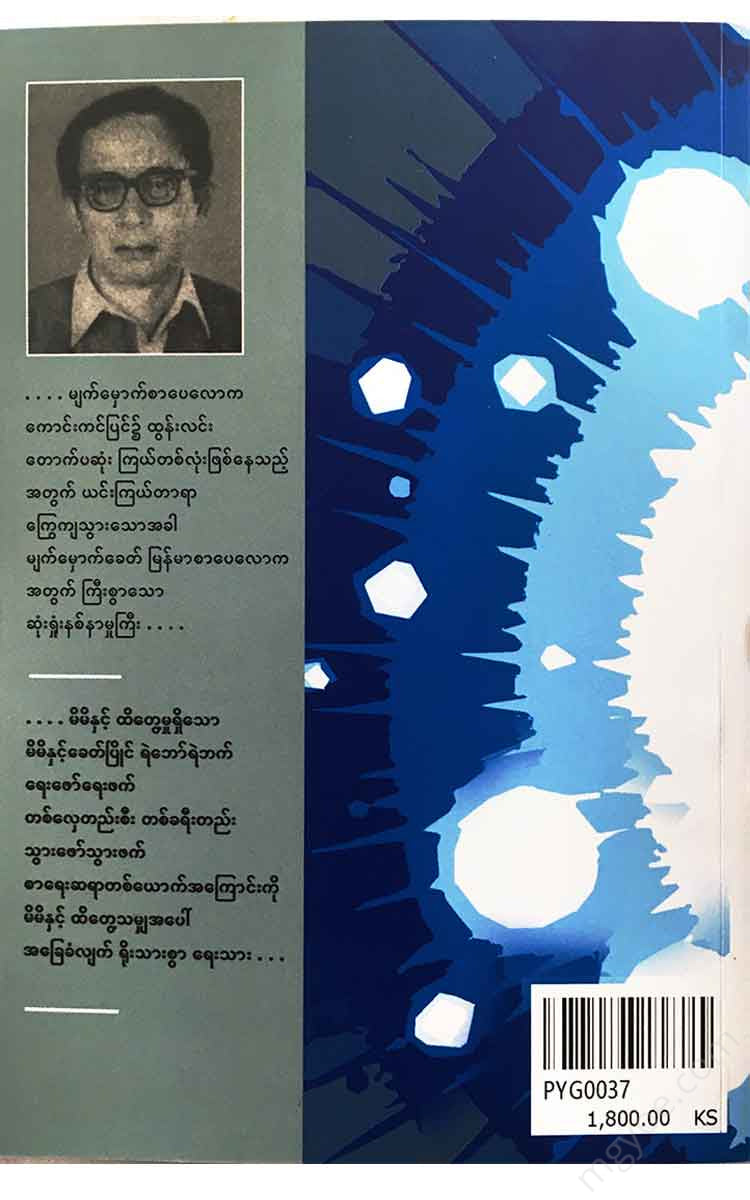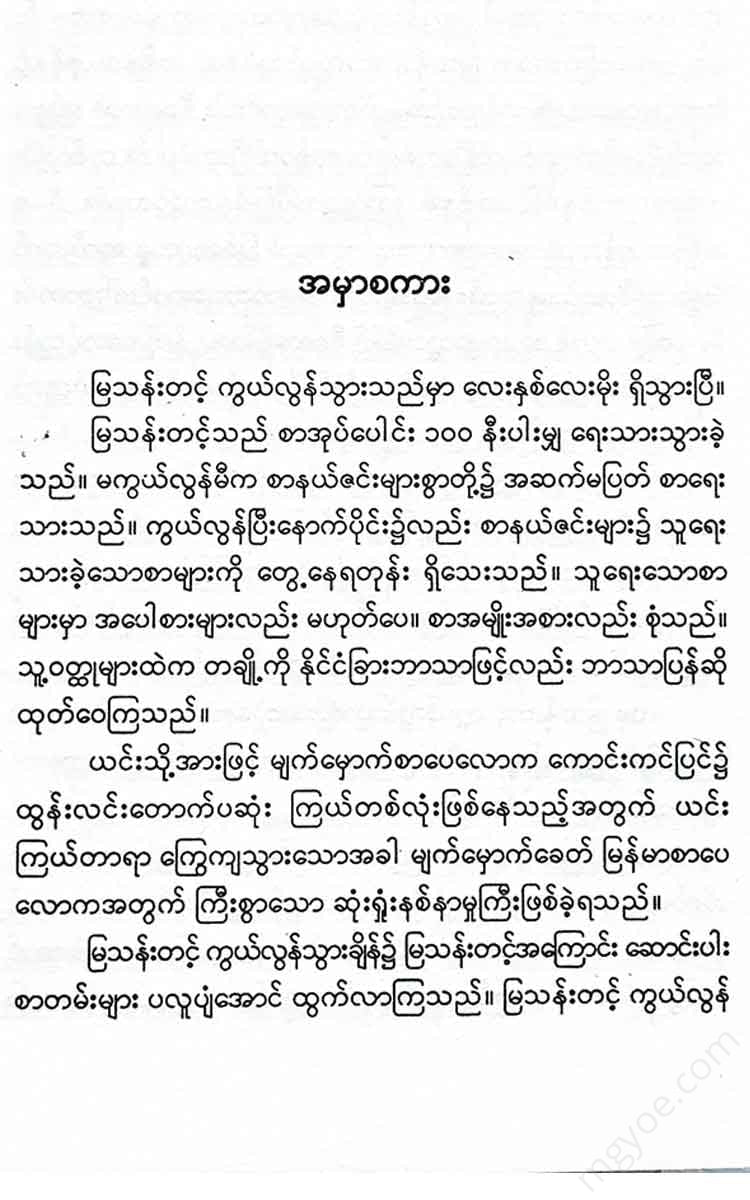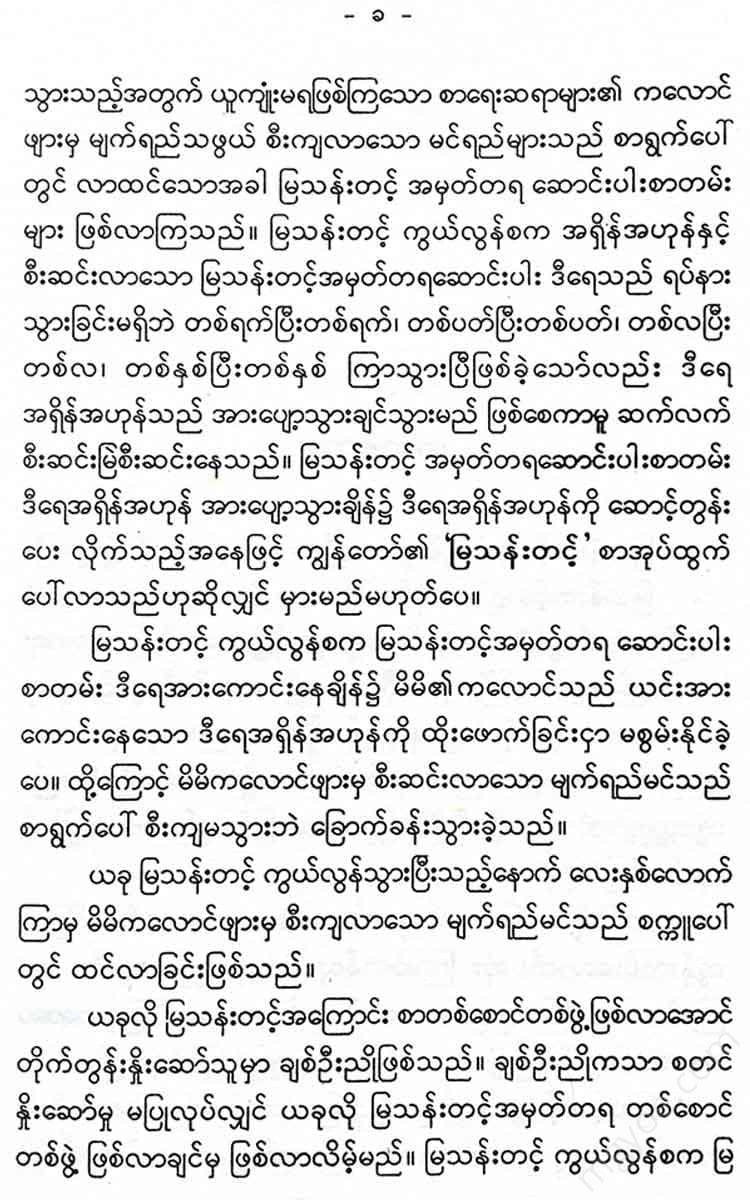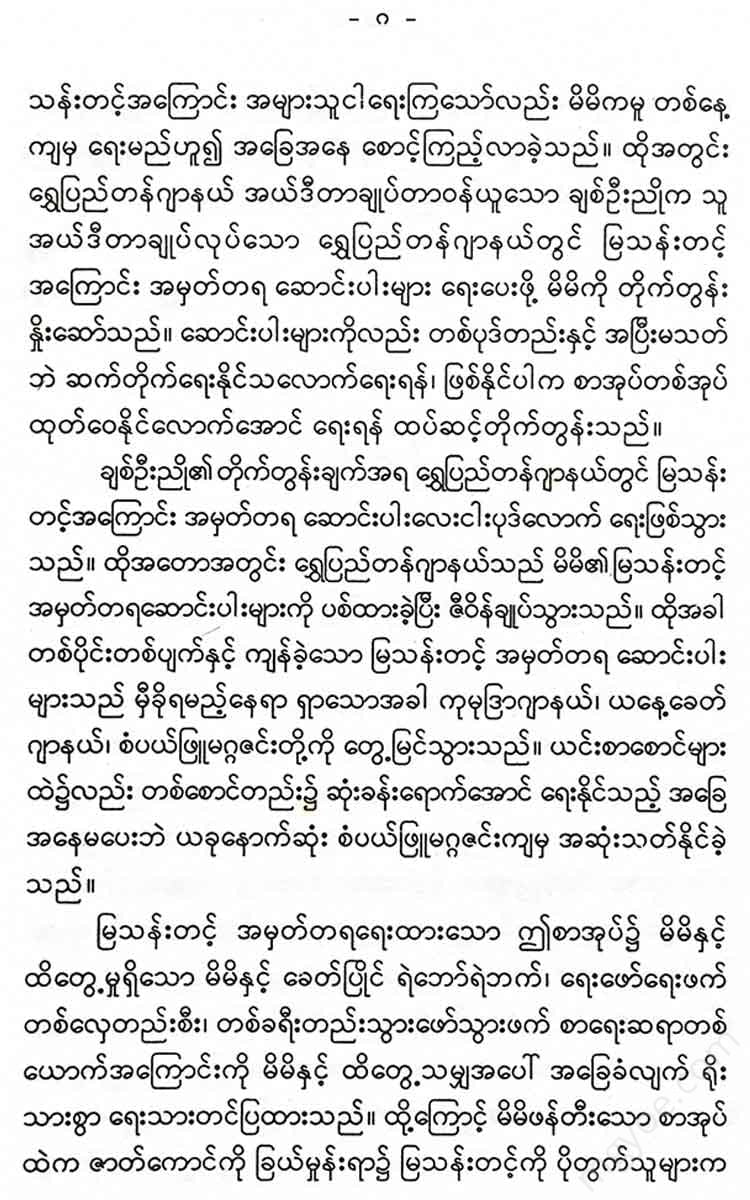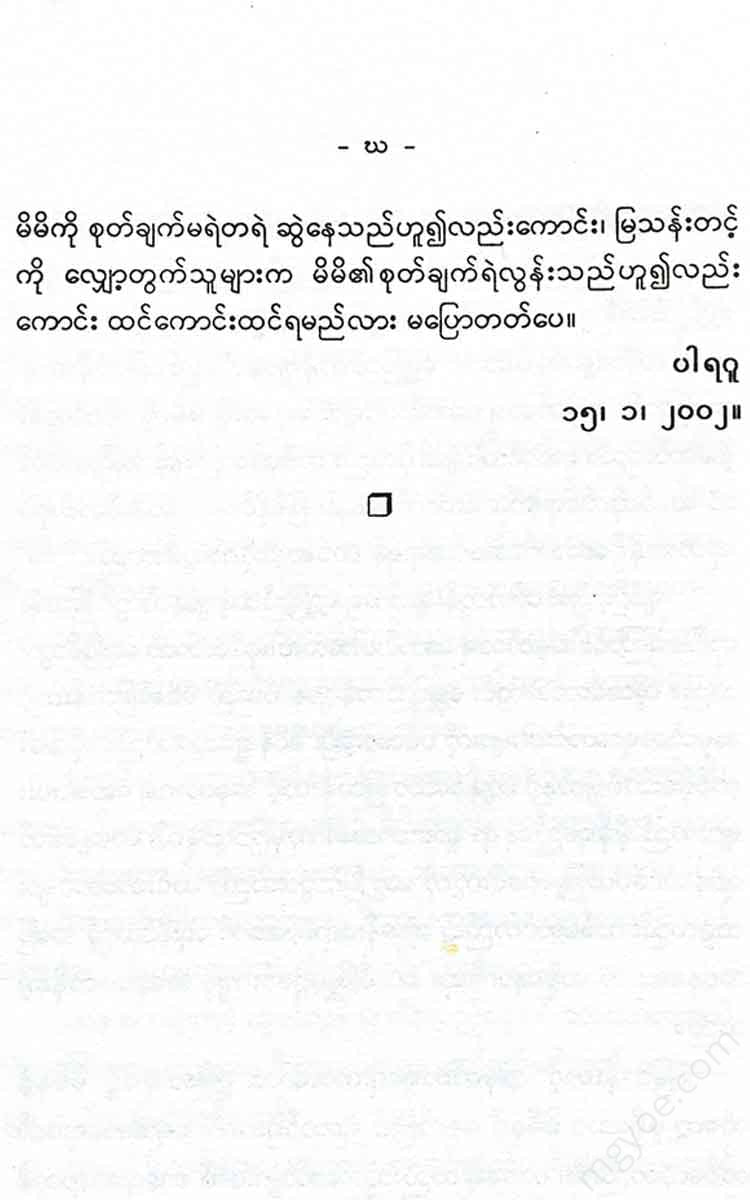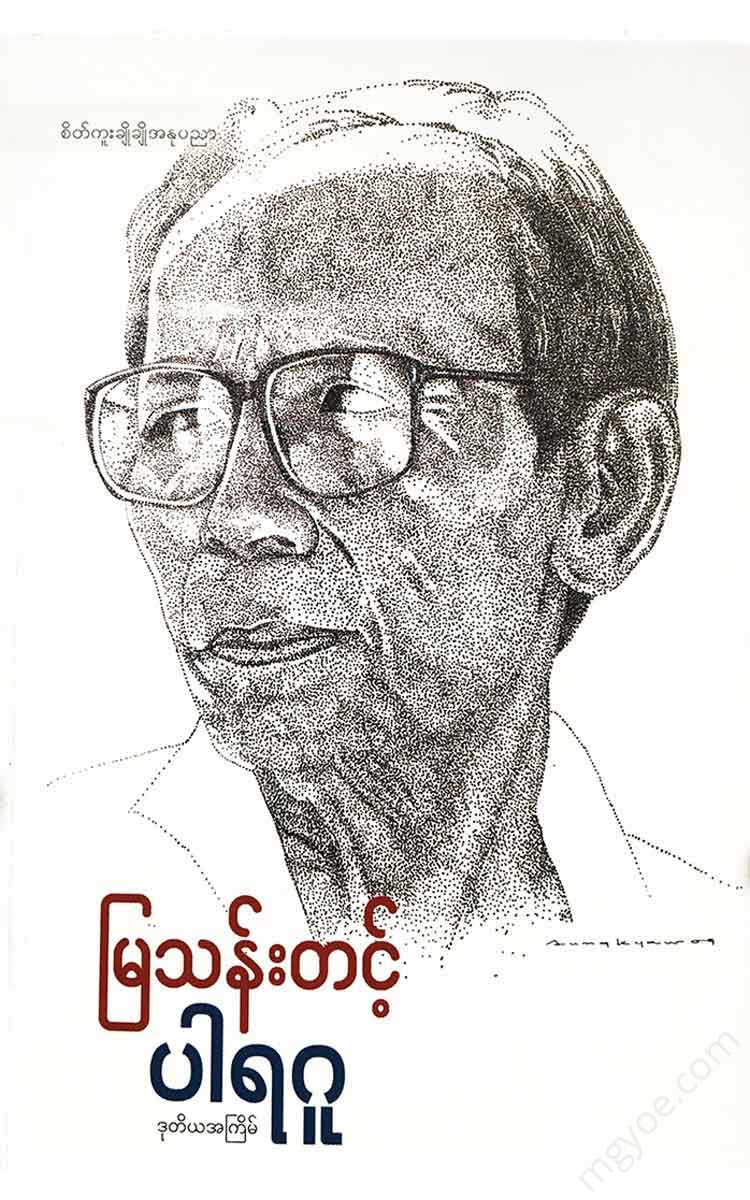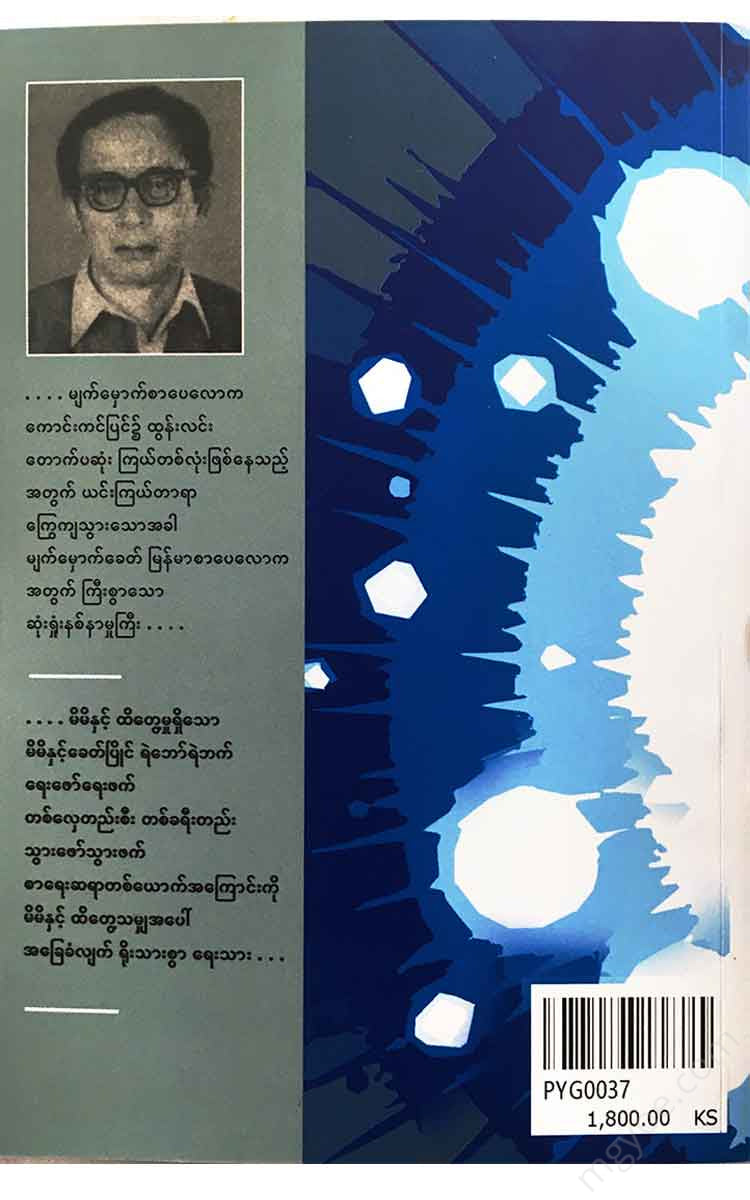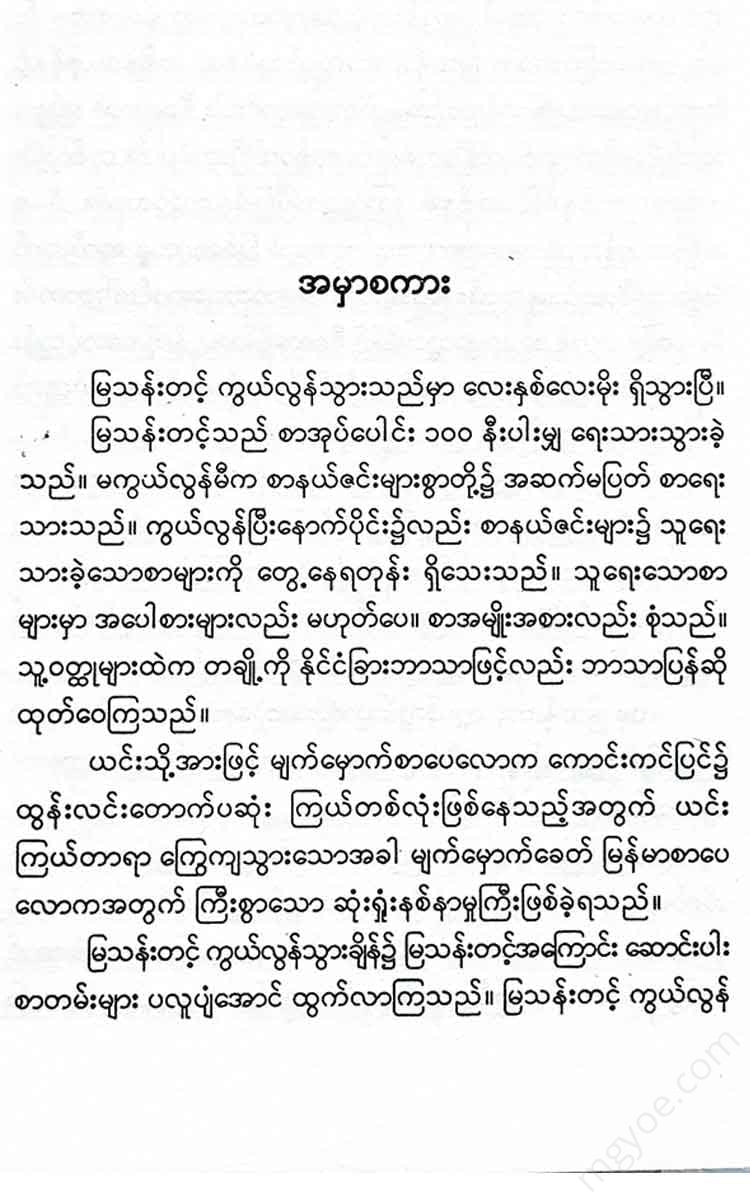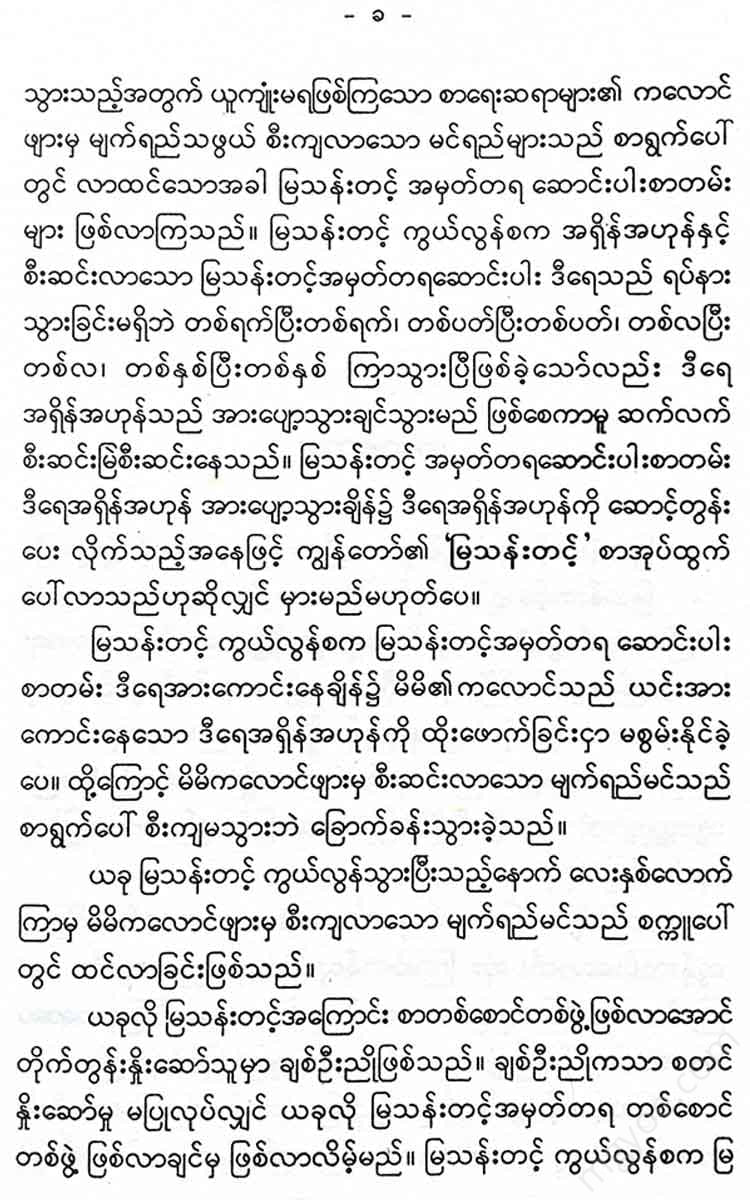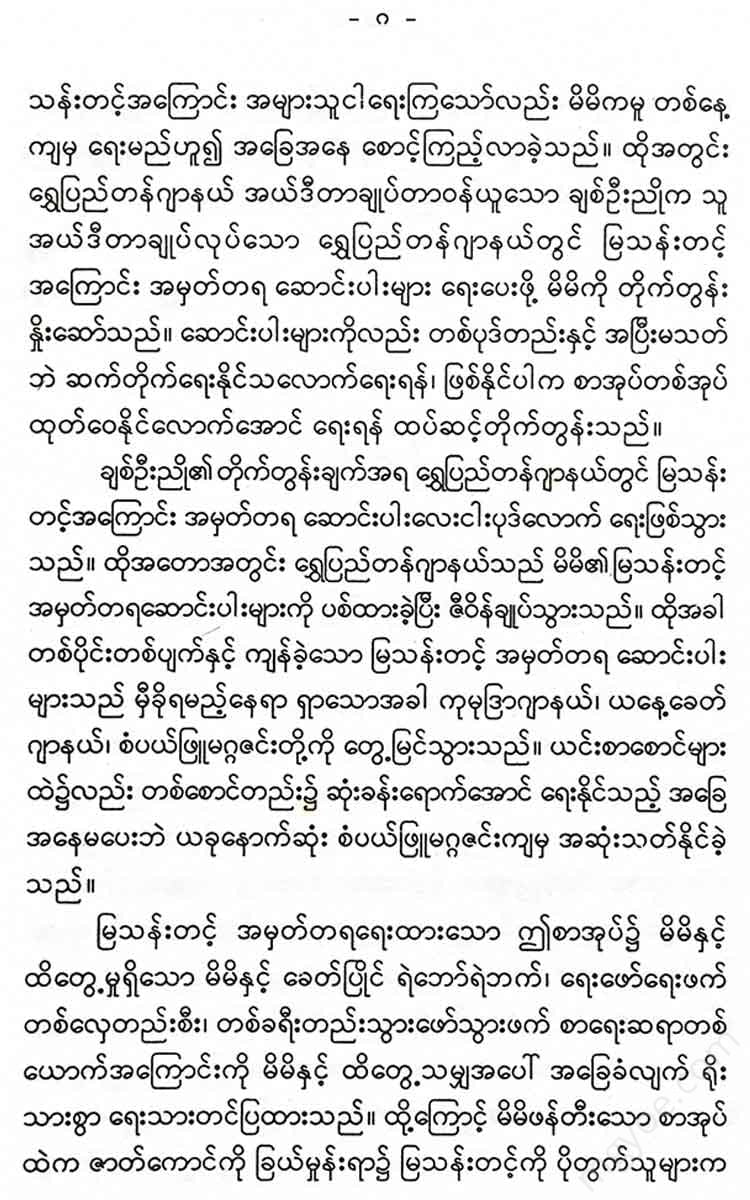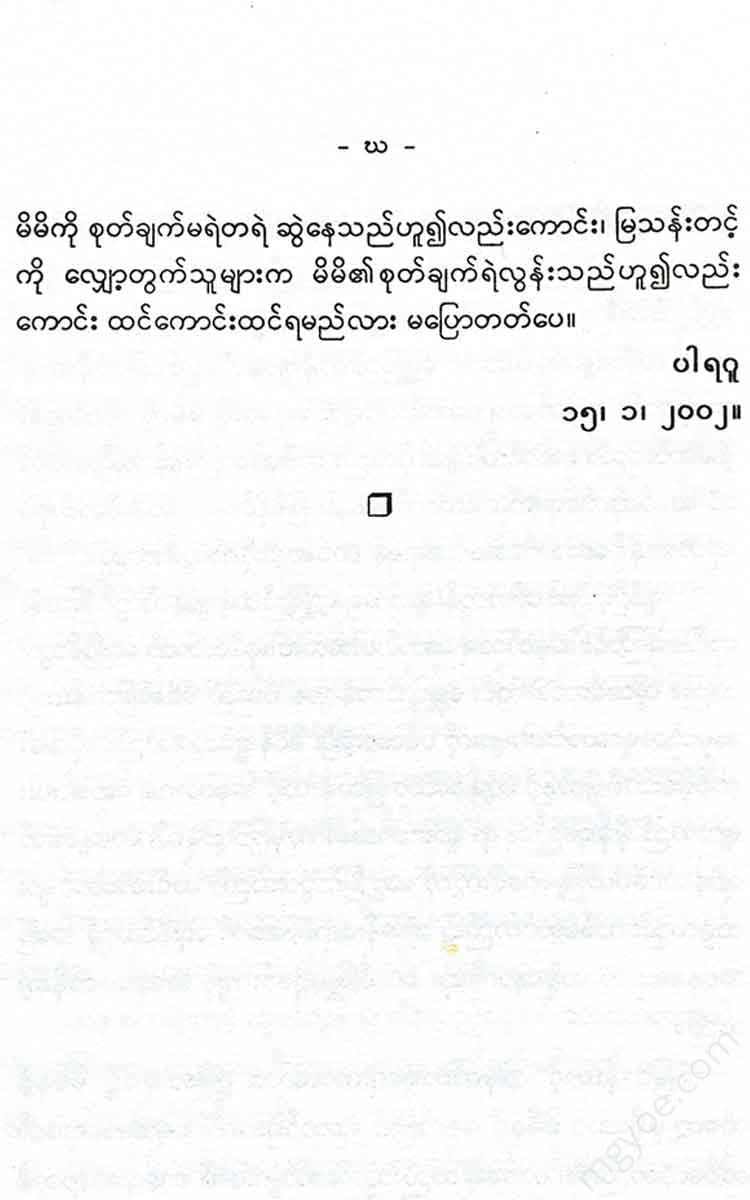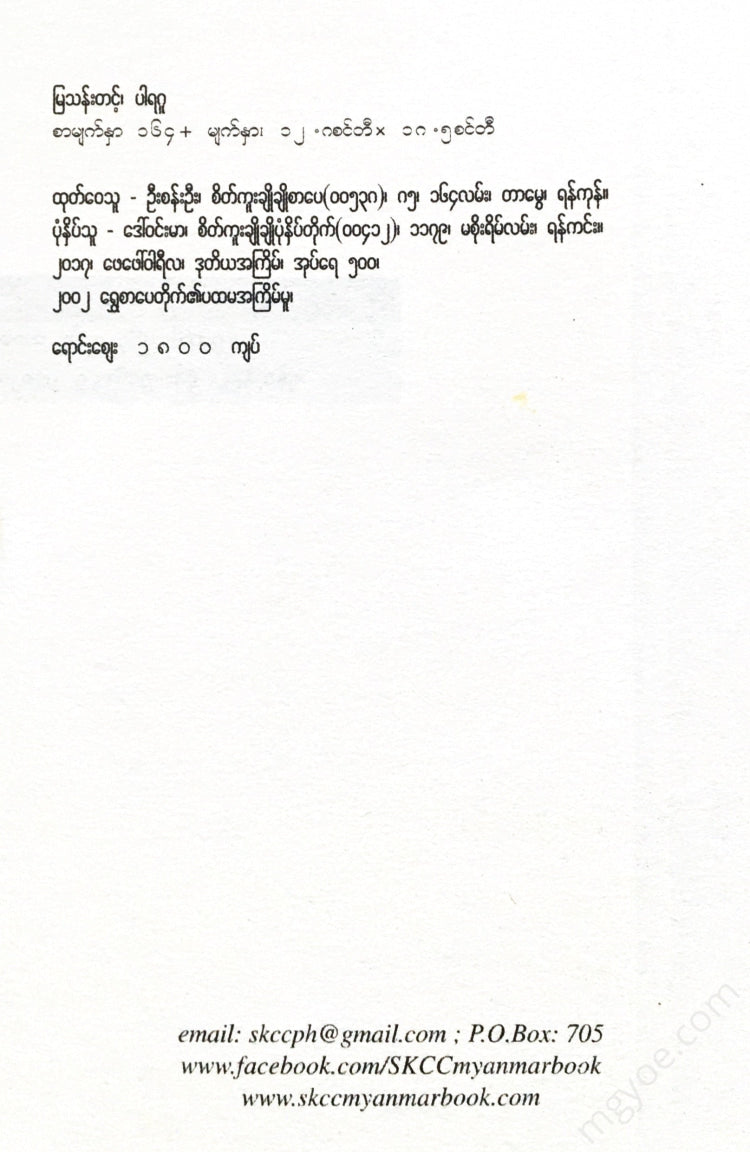စိတ်ကူးချိုချိုစာပေ
Expert - Mya Than Tint
Expert - Mya Than Tint
Couldn't load pickup availability
[ 1 ]
As he was about to enter the ward, he recalled two or three incidents he had experienced before.
It was towards the end of 1956. About a month before the Asian Writers' Conference was to be held in New Delhi, I was staying in Delhi as a Myanmar representative as a member of the Secretariat of the Asian Writers' Conference. During that time, at the invitation of the writers' group of Punjab, some members of the Secretariat of the Asian Writers' Conference led by Dr. Annan went to Punjab. Since I was a member of the Secretariat of the Asian Writers' Conference, I also went on the trip. When we reached the capital of Punjab, Dr. Annan and the local people showed us the sights and attractions of Amritsar.
Here we arrive at the famous Golden Temple of the Sikhs in Amritsar. The Sikhs are very strict. There are strict rules for pilgrims entering the Golden Temple. They are not allowed to wear shoes inside the temple. They are not allowed to wear hats. One of the unique rules is that those entering the temple must wear a handkerchief on their head. We, who entered the temple, also had to wear a handkerchief on our head, as per their rules.
The second experience was also in India. In Agra, India, there is the world-famous Taj Mahal. When you go to the Taj Mahal, you have to follow a rule when you enter the building. You are not allowed to enter the building with your shoes. You have to put on your own shoes and enter the building. If you do not follow this rule, you will not be allowed to enter the building.
The third experience was in Myanmar. About 10 or 15 years ago, when we went to the Ratana Thigi Mine for a literature lecture, the mine managers showed us pictures of the mining operations. At that time, we also wore the same hats that mining engineers wore. It seems that there was no rule that if you don’t wear a hat, you can’t go into the mine. The only thing that caught our attention was the photos of us studying the mine wearing hats.
Now, when entering the intensive care ward of Yangon General Hospital, they have to take off their shoes at the entrance and put on the slippers that are provided. They also put on a loose-fitting robe over their shirt. These rules seem to be the rules that almost every visitor to the ward has to follow.
Mya Than Tint was lying unconscious on a bed in the ward. Four or five people were standing on the veranda outside the ward. Out of these four or five people, Dr. Zaw Than led him and Kota into the room. At the entrance of the room, he saw Nan Ei Eiza and two or three women sitting. When he got closer to the bed, he saw Mya Than Tint lying unconscious and looking uncomfortably. On either side of the bed were Mya Than Tint's eldest daughter Ma Bu and Irin Tin Hla. Both of them were frowning.
Looking at Mya Than Tint lying unconscious, my attention was drawn to a past event. About 27 years ago, I was in a ward of Yangon General Hospital. I went to see a patient who was lying unconscious like this. The patient was Thein Pe Myint. Thein Pe Myint and Mya Than Tint co-wrote “The Tree in the Woods.” Now, the patient, unconscious and unconscious, is lying on the bed in the same state. Both of them are sleeping in the same way, in a state of sleep that they will not wake up from.
After questioning his daughter Ma Bu and some nurses about the patient, he left the patient's room. The patient
When I entered the dormitory, I entered with a clear mind. When I left the room, I was no longer in a state of confusion. I left with the decision that I would never see Mya Than Tint again.
When I reached the veranda outside the room, I stopped and had a few words with some of the writers who were waiting on the veranda. I could see a shadow of hope on everyone's faces, but there was only a hint of silence. Among those people was a friend of Mya Than Tint, who had walked with Mya Than Tint every morning and who had climbed the Kyaik Htiyo with him just yesterday. Speaking about Mya Than Tint, he said, "We climbed on foot to reach the Kyaik Htiyo. When we climbed slowly, Mya Than Tint said he was tired."
He told me. When I heard what he said, a problem that had been lingering in my heart seemed to be resolved.
Mya Than Tint's situation is that tomorrow he will leave his family, his community, and the world of Burmese literature and go on a journey forever. There are various stories about Mya Than Tint's situation. What is the reason for Mya Than Tint's current situation?
He fell from the top of the stairs in the early morning and suffered a head injury, but never regained consciousness. Some say he suffered a brain hemorrhage and fell from the top of the stairs. Others say it was due to another cause.
They speculate that it was because of something. The reason I think is one thing. Mya Than Tint does not have diabetes, high blood pressure, or heart disease. Therefore, it is unlikely that he fell from the top of the stairs due to a sudden stroke or a heart attack.
Mya Than Tint, I would say that the reason for his falling into this state of sleep that he never wakes up is because of his health pride. People have pride in beauty. There is pride in wealth. There is pride in power. There is pride in knowledge. Apart from these prides, there is another pride in some people that people are not aware of. This pride, called “Health Infatuation”, causes harm to people like other prides.
Before Mya Than Tint went to Kyaik Htiyo, he and I met at Shan Lake Hotel (3) one evening. Ko Tun Shwe, the younger brother of U Tun Oo from Mandalay Nagar Syapar, used to host Mya Than Tint and me when he came to Yangon. Sometimes U Aung Thin would also be at the gatherings that Ko Tun Shwe would host. That day, U Aung Thin was away on a trip and did not come. We were the only two of Ko Tun Shwe’s guests.
It was a cool evening. Although it was already winter, it was still cold, so instead of gathering in the Shan Lake building, they gathered on the lawn in front of the building. Mya Than Tint and his walking group would get up early the next morning and go to Kyaik Htiyo. Therefore, the topic of discussion for that day was ‘Mya Than Tint and His Walking Group’s Kyaik Htiyo Journey’. That day, Mya Than Tint had only had two glasses of whiskey, and he was more cheerful than before. He was cheerful. He was cheerful because he was going to Kyaik Htiyo the next day. He was talking about the Kyaik Htiyo Journey, and he was cheerful.
“I will go to Kyaikthiyo tomorrow morning. I will have friends walking with me. There is a Kyaikthiyo Hotel on Kyaikthiyo Pagoda. I have booked the Kyaikthiyo Hotel on my phone. We will walk up and down to Kyaikthiyo Pagoda.”
I was thinking about him as I listened to his enthusiastic words. Mya Than Tint is famous and successful.
Although he is a writer, he does not have the intellectual power or the writer's pride. There are some writers who are not as successful as him, or even half as successful, but they are still respected. Some of these writers are the backdrop for Mya Than Tint, who does not have the intellectual power or the writer's pride. Mya Than Tint is a rare writer who lives in his own land, but he is not a person who is proud of his wealth or possessions. However, when we look at his life, we see that there is a kind of pride that ordinary people cannot appreciate. This pride is the pride of health. The Digha Nikaya states that there are three kinds of pride: Arogama (healthy pride), Yovva Namada (age pride), and Jati Mada (race and birth pride).
Even Ma Soo knew that Mya Than Tint's life was intertwined with health. He showed himself to be a healthy person through his actions. He also showed it through his words. He wore thick glasses that looked like broken bottles.
Aung has poor eyesight but moves around like a sighted person. He goes out into the city alone without a companion. He rides a bus. He crosses the road where cars are speeding. Judging by his behavior, he seems like a sighted person.
However, the truth is that his eyesight has deteriorated to the point where he can no longer see people clearly after about a mile or two. When the ophthalmologist who was going to treat his eyes examined his eyes, his eyes bulged out. A person with such poor eyesight
